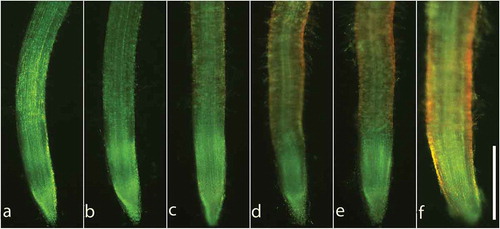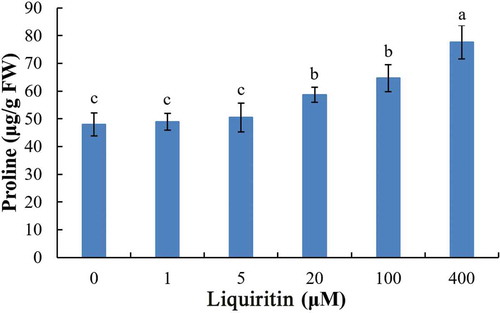Figures & data
Figure 1. Mitotic index and mitosis process in root tip cells of lettuce seedlings after treatments with liquiritin. The results presented are mean of three replicates ± SE, different letters denote significant differences at p < .05 according to oneway ANOVA with an LSD test.

Figure 2. Cell viability in lettuce root tips after treatments with liquiritin. Lettuce seedlings were treated with liquiritin at concentrations of (a) 0, (b) 0.1, (c) 1, (d) 10, (e) 100 and (f) 1000 μM for 48 h. Roots were stained with FDA/PI. Green fluorescence and red fluorescence indicate viable and dead cells in root tips, respectively. Bar = 500 μm.

Figure 3. Relative Evans blue uptake and root vitality of lettuce seedlings after treatments with liquiritin. The results presented are mean of three replicates ± SE, different letters denote significant differences at p < .05 according to oneway ANOVA with an LSD test.

Figure 4. ROS production in lettuce roots after treatments with liquiritin. Lettuce seedlings were treated with liquiritin at concentrations of (a) 0, (b) 0.1, (c) 1, (d) 10, (e) 100 and (f) 1000 μM for 48 h. Roots were stained with DHE. Bright fluorescence shows ROS production (presumably O2−). Bar = 200 μm.



